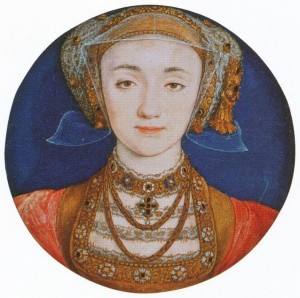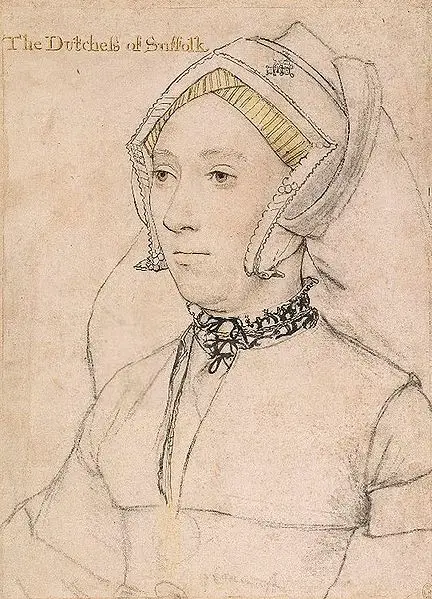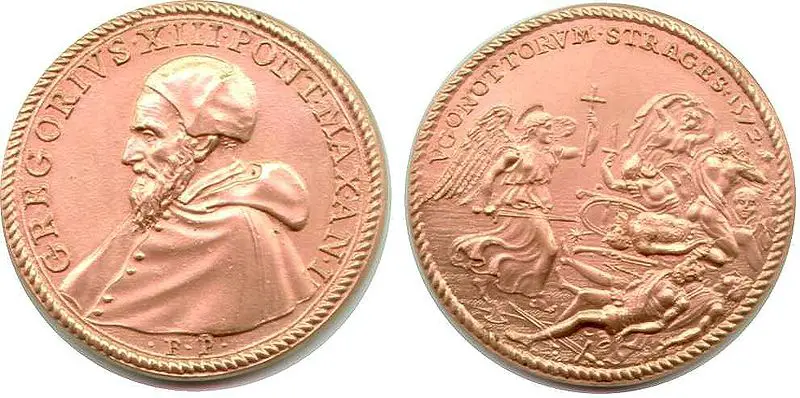 Gloriana, Elizabeth I, is the famous Virgin Queen of England. She never took a husband. Much speculation has swirled around Elizabeth's decision to remain single. Several tragic, if not traumatic, events are cited as reasons why Elizabeth chose not to marry.
Gloriana, Elizabeth I, is the famous Virgin Queen of England. She never took a husband. Much speculation has swirled around Elizabeth's decision to remain single. Several tragic, if not traumatic, events are cited as reasons why Elizabeth chose not to marry.
Elizabeth was born on 7 September 1533. On 19 May 1536, when Elizabeth was not quite three years of age, her mother, Anne Boleyn, was beheaded by order of her father. Elizabeth, a precocious child, asked following the fall of her mother, "how haps it governor, yesterday my Lady Princess, today but my Lady Elizabeth?". Elizabeth's first step-mother, Jane Seymour, died of puerperal fever in 1537 only days after giving birth to Elizabeth's little half-brother. Elizabeth was four years old. Katherine Howard, a cousin of Elizabeth's on her mother's side and Elizabeth's third step-mother, was beheaded for high treason for her "dissolute life previous to her marriage" in February 1542. Elizabeth was eight years old.
As a teenager, Elizabeth experienced poor treatment at the hands of men and also saw her fourth step-mother, Katherine Parr, die shortly after giving birth. While living in Katherine Parr's household, Katherine's husband Thomas Seymour was physically flirtatious with Elizabeth in a way that must have been both confusing and frightening. Elizabeth was confronted by Katherine Parr, who blamed Elizabeth for Thomas Seymour's dubious actions. Seymour was later executed as it was discovered he had designs on marrying Elizabeth. After Elizabeth became queen, she famously never married. It has been presumed that the reason why is because of all the sadness and destruction of married women that Elizabeth witnessed growing up. However, there is one oft-forgotten example of a single life well-lived: the life of Anne of Cleves.
Anna von Kleve, commonly known as Anne of Cleves, who took the escarbuncle as her badge, married Henry VIII as his fourth bride and became Elizabeth's second stepmother in January 1540. The escarbuncle, a heraldic device consisting of eight metal rays, took its name from a combination of the French word esmeraude, or emerald, and the Latin word carbunculus, or dark red precious stone; in effect, a green ruby. Anna, an intelligent woman herself, would have met Elizabeth when Elizabeth was six years old. Shortly after her wedding, Anna received a letter from little Elizabeth, who very much wanted to meet her new stepmother:
"Permit me to show, in this billet, the zeal with which I devote my respect to you as queen, and my entire obedience to you as my mother. I am too young and feeble to have power to do more than felicitate you with all my heart in this commencement of your marriage. I hope that your Majesty will have as much goodwill for me as I have zeal for your service."
So impressed and delighted by this letter was Anna that she asked her new husband if the Lady Elizabeth could come to court.
Anna was queen consort of England for a mere six months, from January 1540 until July 1540, before her marriage to Henry VIII, Elizabeth's father, ended. After Anna made the politically wise move of accepting the divorce from Henry, she had but one request: that Elizabeth would be allowed to visit Anna occasionally. Anna was very fond of Elizabeth and delighted by her intellect, enjoying her position as stepmother to the smart, beautiful girl. At twenty-four years old, Anna was certainly of an appropriate age to be Elizabeth's mother. And, in fact, it is recorded that Anna asked Henry for permission to visit with Elizabeth because Anna felt, "...that to have had [her] for her daughter would have been greater happiness to her than being queen." While there is not much information about Elizabeth's relationship with Anna during her formative years, it seems that there was already a strong mother-daughter relationship between the two.
As part of her divorce settlement, Anna received Hever Castle, which was the childhood home of Elizabeth's mother. It is possible that Elizabeth and Anna could have spent time together at Hever Castle. Anna also received several properties including that of Richmond, which would be Anna's primary residence. Anne enjoyed her new life as the Tochter von Kleve, or Daughter of Cleves, and the "King's sister". Anne purchased new dresses, came and went as she pleased, maintained her own household, and frequented Henry VIII's court. Anna chose to stay in England as Henry's sister instead of returning to Kleve, where she would have been subject to the desires of her brother, Duke Wilhelm. Instead, Anna never remarried; she was content to live her life as a single noblewoman in England, not truly subject to the will of any man, until she died. While there were some trials and tribulations for Anna von Kleve after her marriage was dissolved, overall she maintained her incredible strength of character and was renowned for her gracious demeanor.
Elizabeth surely spent time with Anna, who could have been the closest woman Elizabeth had to a mother. While Katherine Parr, the sixth wife of Henry VIII and Elizabeth's fourth stepmother, certainly took an interest in the education and upbringing of Elizabeth, Elizabeth had already enjoyed the love and support of Anna. Katherine Parr did not formally come into Elizabeth's life until July of 1543, when Katherine became Henry's queen consort.
Anna and Elizabeth were given equal prominence during a very important moment in English history, namely the triumphant ride through London of England's first queen regnant, Mary I, in September 1553. Anna and Elizabeth rode in the chariot immediately behind that of Mary I. It was written in the Chronicle of Queen Jane and Two Years of Queen Mary that, following Mary I's chariot: "Came another chariot having canapie all of one-covereng, with cloth of silver all whit, and vi horses betrapped with the same, bearing the said charyat; and therin sat at the ende, with hir face forward, the lady Elizabeth; and at the other ende, with her back forwarde, the lady Anne of Cleves." For this monumental occasion, it is recorded that Elizabeth and Anna wore matching dresses of crimson velvet. Very sadly, Anna died in July 1557, a mere sixteen months before Elizabeth inherited the throne from Mary I.
Anna's legacy lived on in Elizabeth I. As Gloriana, the famous Virgin Queen of England, Elizabeth I showed a great cunning and wit that could have been developed through her relationship with Anna. Elizabeth I was also a linguist in her own right, but may have been inspired by the intellect of her beloved stepmother, who learned English quite rapidly upon arriving in England in 1540. Although Elizabeth I certainly was in love with at least one man during her life, she had the excellent example of Anna's independent, strong, noble lifestyle to follow and chose to remain single. While it is true that Elizabeth I experienced an exceptional amount of trauma as a young girl, she had the iron-will and gracious character that Anna displayed from 1540 until her death in 1557. Anna, bearing a great shield or escarbuncle as her badge, provided Elizabeth with a glowing example of a powerful, politically savvy, independent noblewoman.
Heather R. Darsie lives in the United States with her family and three parrots. She works in the legal field, with a focus on children. She obtained a Bachelor of Arts degree in German Languages and Literature, then a Juris Doctorate in American jurisprudence, and studied abroad in Costa Rica and France. Heather has always loved history. She first became acquainted with Elizabeth I when she was in middle school and chose to write a book report about her. Since then, she has always held an interest in the Renaissance and its numerous enigmatic citizens, with particular focus on the history of England and Italy. She is currently working on a book on the heraldry of Tudor women and is also researching Anne of Cleves.
Sources and Suggested Reading
- Weir, Alison. The Six Wives of Henry VIII. (New York: Grove Press, 1991).
- Norton, Elizabeth. Anne of Cleves, Henry VIII’s Discarded Bride. (Gloucestershire: Amberley Publishing, 2010).
- Weir, Alison. The Children of Henry VIII. (New York: Ballantine Books, 1996).
- Anonymous. Chronicle of Queen Jane and Two Years of Queen Mary.
Images: Elizabeth I Pelican Portrait by Nicholas Hilliard, Miniature of Anne of Cleves by Hans Holbein the Younger.




Enjoyed your article. I have been interested in the Tudors, most of my life. I really took an interest in the article you wrote. I have wondered what Ann of Cleves did after her divorce from the Great Henry. Your story made much sense to me. Thank you again.
thanks a lo t for your precious contribution
I am in love with the Tudor period and your article was fantastic
write more, please I share everything xxx
I love this article. And you have further increased my desire to read “Anne of Cleves, Henry VIII’s Discarded Bride” in the near future. I am really fascinated by Anne of Cleves and really want to know more about her.
God Bless,
Tahlia
Thank you very much for this article. I always wondered what happened to Anne of Cleves. I will have to do some more reading now. Thank you.
I really liked this article but I am also a bit disturbed by it. I have a bad habit of picking at nits, and on this occasion, those nits are mineralogy and heraldry…both hobbies of mine. I’m both a mineral collector and a heraldry geek. Actually it’s a bit worse than that. I’ve taught mineralogy at the university level. I take my rocks very seriously.
I do not know where you found your information on escarbuncles. Anne of Cleves took the major charge off the arms of the Herzogtum Kleve (Duchy of Cleves), and used it as her badge. The arms of the Herzogtum Kleve are: gules, surmounted on an escutcheon argent, an escarbuncle Or. In normal English, that’s a red shield with a small whilte shield shape placed in the middle of the shield; and on top of both those, is a yellow stylized shield boss thing called an escarbuncle in English and French heraldry and a lilienhaspul or gelevenrad in German heraldry. That’s out of James Parker’s Dictionary of Heraldic Terms and Fox-Davies’ Art of Heraldry, two of the best heraldic refs around.
Both Parker and the OED remark that the heraldic charge was originally called a carbuncle. Escarbuncles are unusual in heraldry, with Cleves and Mandeville being the notable bearers of these rather unique charges. In the case of Mandeville, the escarbuncle is a satisfying red: Or, an escarbuncle gules (on a yellow shield, a red shield boss thingy).
Parker grumbles about the inappropriate appropriation of the term carbuncle (a red stone, a red mass, a red boil) for what is essentially a stylized shield boss as a heraldic charge. The OED notes the first usage of EScarbuncle as a heraldic charge in 1572 and as a gem stone in 1610. Emeralds and the color green aren’t mentioned.
Now from the mineralogy perspective, a ruby by definition is the mineral corundum with red coloration due to a chromium impurity in the crystal lattice of aluminum and oxygen. There’s no such thing as a green ruby. Anyone who wants to convince you otherwise is practicing fraud. Perhaps you could retitle your article? My poor brain hurts. 🙂
Doc, thank you for your analysis! You are thoroughly correct about the heraldic description and mineralogy, along with the linguistic history. I chose “Gloriana and the Green Ruby” as a title because it had a nice alliteration and I chose to take poetic license with the origin of the word “escarbuncle.” I had originally entitled the article, “Gloriana and the Gemstone, ” but that did not have the same ring to it. As such, I will keep the title of “Gloriana and the Green Ruby.” Thank you!